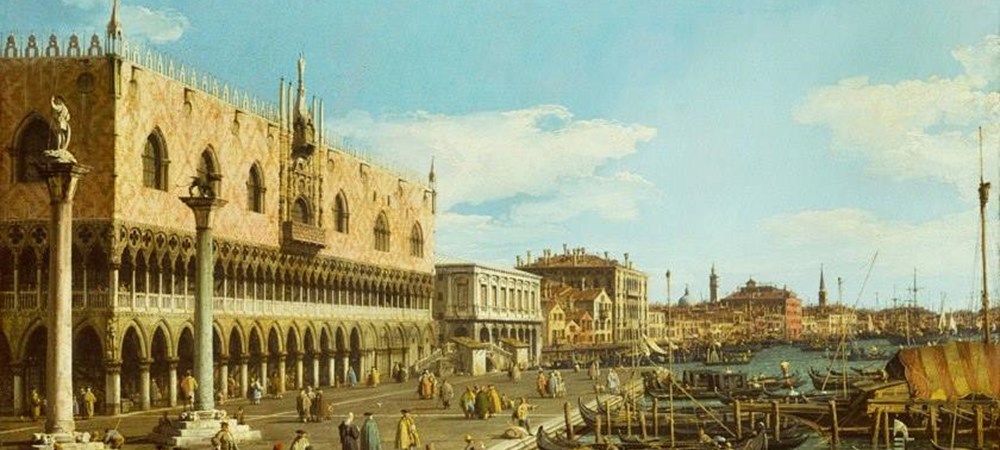Daily art story: Venice through the eyes of Canaletto
Giovanni Antonio Canal (1697 - 1768), better known as Canaletto, was an Italian painter, draughtsman and printmaker, producing various series of etchings. His father, Bernardo Canal (c. 1674 - 1744), was a scene-painter.
Canaletto was the leading painter of city views, or vedute, in eighteenth-century Venice. Paintings depicting panoramic views of the city and its surrounding areas were highly prized by the travellers and art lovers who made the Grand Tour - the traditional trip of Europe undertaken by mainly upper-class European young men of means. This lengthy trip to Italy and France was an essential part of the education of many English aristocrats in the 18th century. Like other visitors to Italy, they considered the view paintings to provide the ideal record of their youthful adventure.
Today we're taking a look at some of the Canaletto's masterpieces, that can be seen at the Thyssen-Bornemisza Museum and the Wallace Collection.
Canaletto's early works remain his most coveted and, according to many, his best. La piazza San Marco in Venice, depicts the most famous square in Venice from a high viewpoint, ensuring a broader frame for the composition and giving depth to the perspective. Another distinguishing feature of Canaletto’s work was the painstaking rendering of all the elements that appear in his works, designed to create atmosphere in his view paintings.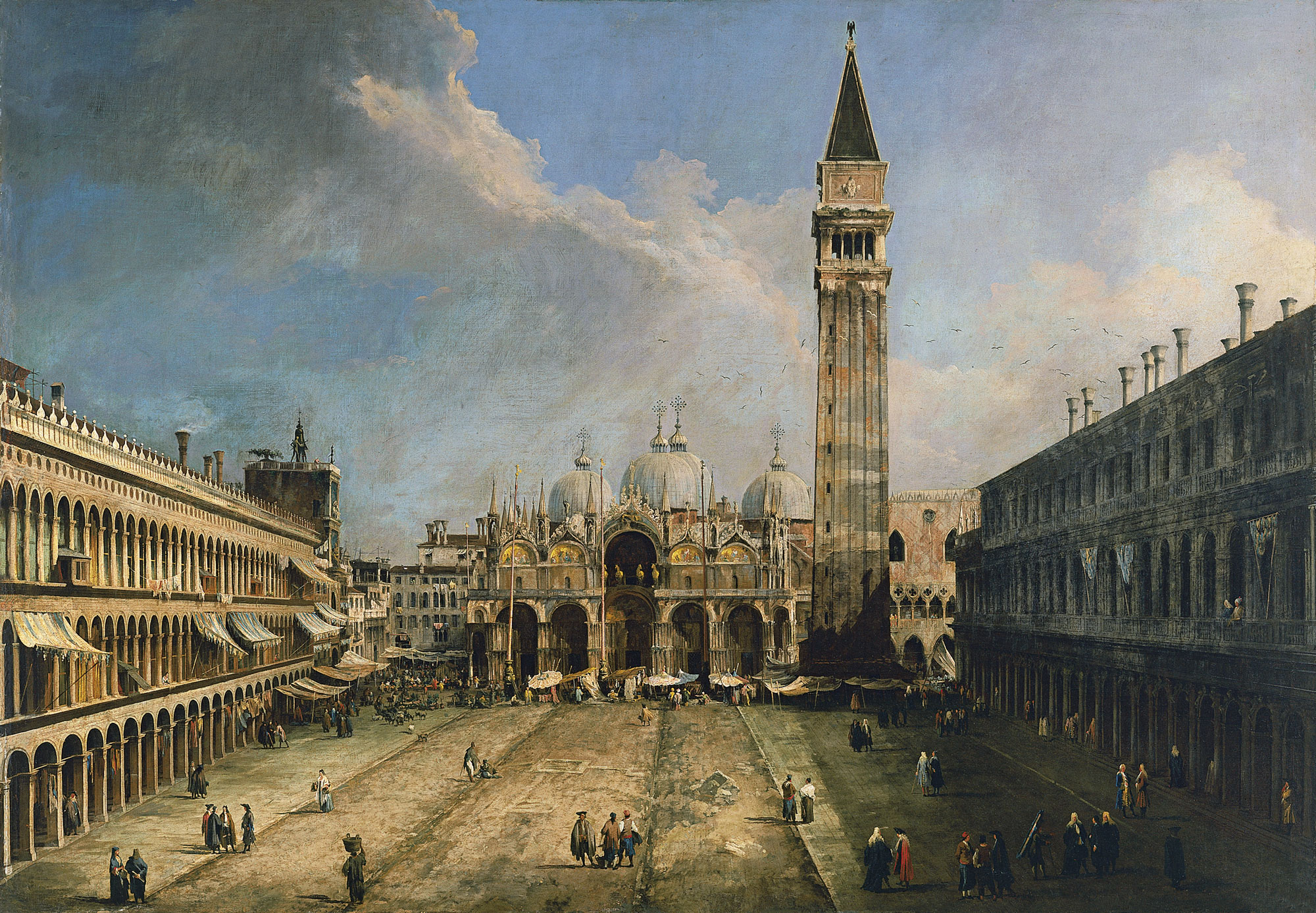
Canaletto, La piazza San Marco in Venice, ca. 1723-24
Oil on canvas. 141.5 x 204.5 cm
Text and image from the Thyssen-Bornemisza Museum
The subject of The Grand Canal from San Vio was depicted by the artist on a number of occasions. The canvas already features some of the most notable characteristics of Canaletto’s style, including the choice of a high viewpoint to create the composition, the precision with which the buildings are depicted with all their ornamental details, and depiction of the numerous elements that create the overall atmosphere of the work, all devices that can be considered among the innovations that the artist brought to this genre.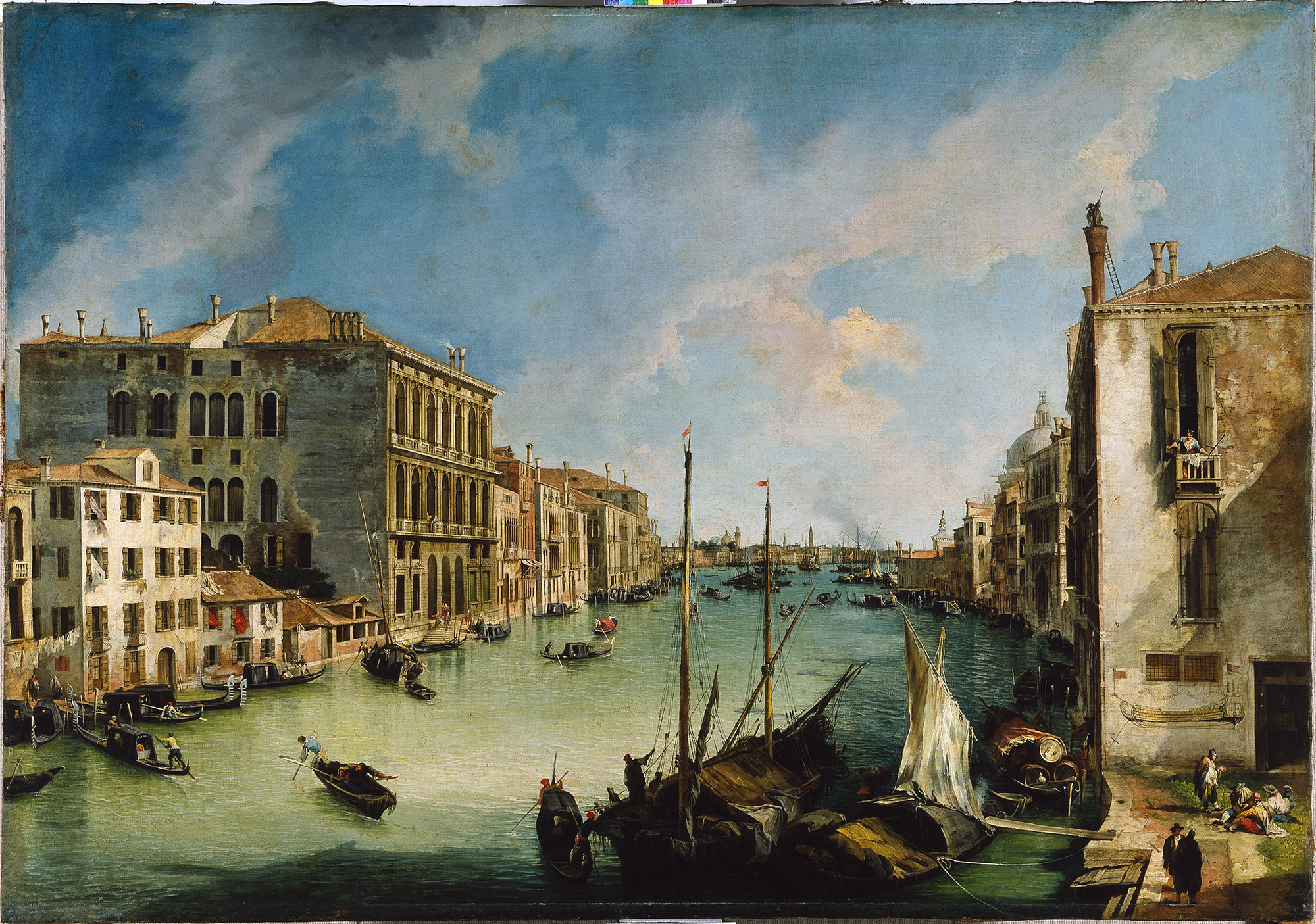
Canaletto, The Grand Canal from San Vio, Venice, ca. 1723-24
Oil on canvas. 140.5 x 204.5 cm
Text and image from the Thyssen-Bornemisza Museum
Venice: the Grand Canal from the Palazzo Dolfin-Manin to the Rialto Bridge, depicts the Grand Canal looking north to the Rialto Bridge, with the Fondamenta del Vin on the left and the Palazzo Dolfin-Manin on the right.
Canaletto, Venice: the Grand Canal from the Palazzo Dolfin-Manin to the Rialto Bridge, c. 1740 - 1750
Oil on canvas, 58.5 x 93 cm
Text and image from the Wallace Collection
Venice: Riva degli Schiavoni depicts a view still familiar today, with its gondolas bobbing on the water before the Doge’s Palace on the left. The columns of San Todaro and of the Lion of Saint Mark stand on the Piazzetta in front of the Palace, with the Ponte della Paglia and the Prison beyond. Both views were very popular with Canaletto’s patrons.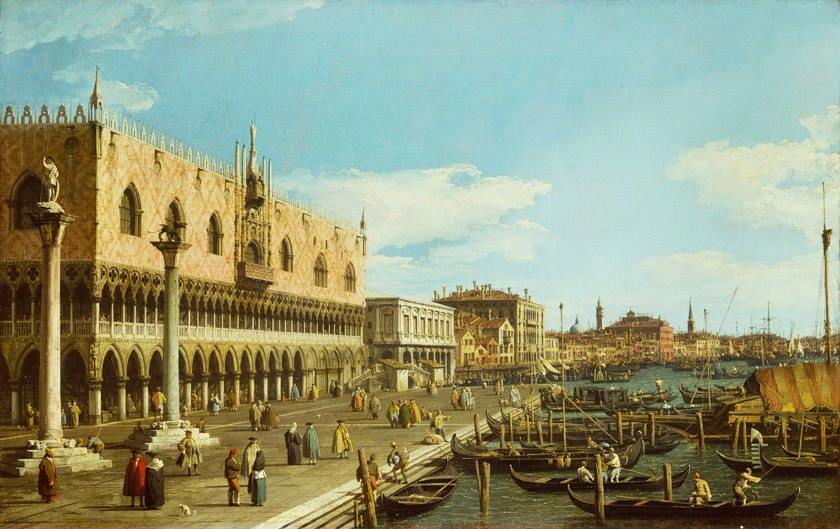
Canaletto, Venice: the Riva degli Schiavoni, c. 1740 – 1745
Oil on canvas, 58.2 x 93.5 cm
Text and image from the Wallace Collection
The Bucintoro was the official galley of the Doge of Venice, which Canaletto here depicts moored between gondolas and other boats beside the Piazzetta. This large vessel, decorated in red and gold, was a symbol of the Serenissima and was used to entertain illustrious guests during the ceremony of the city’s symbolic marriage to the sea on Ascension Day. On that day the Doge, accompanied by the city’s authorities, sailed out on the Bucintoro to the Lido where the patriarch of San Pietro awaited him to bless a ring that the Doge then threw into the sea, symbolising the marriage of the city of Venice to the Adriatic. Once the ceremony was over, including the accompanying mass, a large banquet took place at the Doge’s palace. The last Bucintoro was destroyed by the Napoleonic troops in 1798 and broken up in 1824. The festival of the Bucintoro was the subject of extensive commentaries by travellers and visitors who witnessed it and was depicted by many artists, such as Leandro Bassano, Gabriel Bella, Francesco Guardi and Canaletto.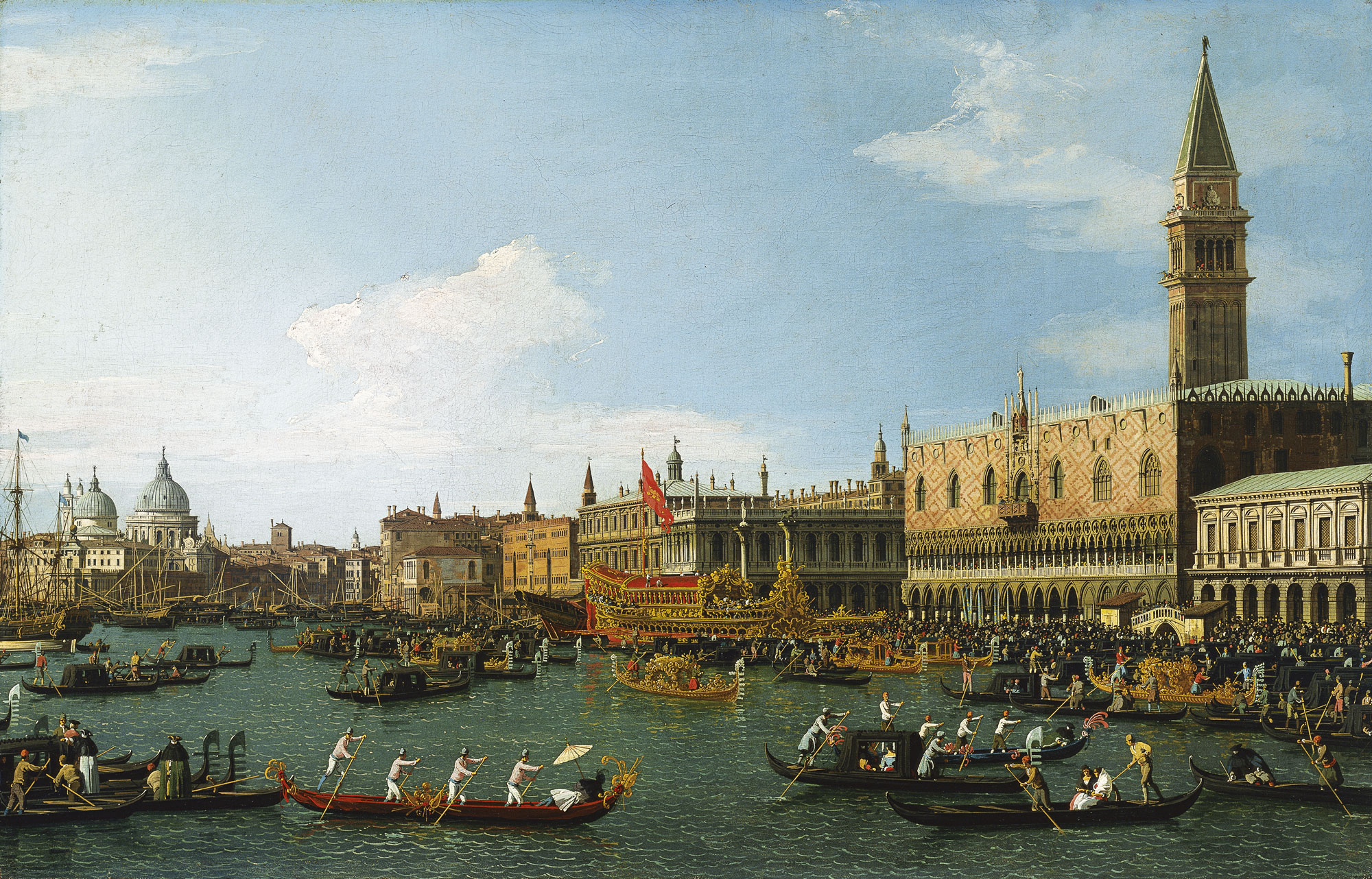
Canaletto, The Bucintoro, ca. 1745-50
Oil on canvas, 57 x 93 cm
Text and image from the Thyssen-Bornemisza Museum, on deposit at the Museu Nacional d'Art de Catalunya (MNAC)

